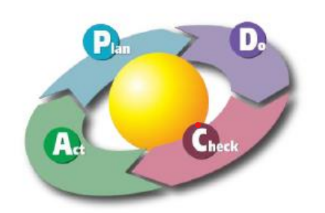Organisation
Cumela is a trade association for entrepreneurs in green, soil and infra. There are over 3,000 Cumela companies in the Netherlands, employing some 40,000 committed professionals. Together they generate a sector turnover of over four billion euros and invest energetically in innovative equipment. As a sector organisation, Cumela supports these companies in the broadest sense: from general advice to individual customisation and from insurance to training and courses. It does this with committed employees from Nijkerk and throughout the country. Cumela is of and for its members.

Cumela represents the interests of the sector and is at the centre of the (political) social playing field. At regional, provincial, national and European level, it engages in expert, powerful and effective lobbying. It strives for a level playing field for all entrepreneurs and makes binding commitments, agreements and negotiates rules on behalf of the sector. Cumela is a members' organisation, pooling members' strengths, ensuring they share knowledge with each other and meet regularly. It provides services to individual entrepreneurs in the sector, with specialist knowledge. It also offers tailor-made advice. Even courses, training and insurance can be obtained from Cumela.
Issue
Cumela's MT has expressed a desire to professionalise planning and control. The reason for this is that situations have arisen where decisions are submitted to the MT, where it cannot immediately be determined whether it fits into a plan and whether the requested financial possibilities are available.
As an industry organisation, Cumela is in a financially stable situation, so the need for a tight planning and control process was not the first priority until recently. However, the MT did see the added value of introducing structure and took the decision to seek guidance in this regard. The central question at Cumela is mainly focused on getting a better grip and understanding of finances. Getting to grips with adjusting at departmental level was also part of this question.
Cumela asked Improven to draw up a plan for this and provide support in setting up a planning & control cycle for a certain period of time.
Approach
Our proposed approach has a number of phases:
1. Strategic objectives and plan
This phase included a kick-off meeting with the client, incl. going through and fine-tuning expectations and approach. Subsequently, several workshop sessions zoomed in on Cumela's strategic objectives and themes as a whole. This phase also looked at the desired departmental structure for financial steering, the desired performance indicators, the current budget and coherence.
2. Design management info and dashboard
In this follow-up phase, talks were started with the various departments, during which an explanation was given of the desired P&C methodology, e.g. holding realisation talks on a quarterly basis. We also looked at the financial management wishes and data (substantive information needs) per department, in order to arrive at one supported financial management dashboard for all departments. After this, in cooperation with the departments, the annual budget was split into quarters and an (indicative) long-term budget was drawn up for each department.
3. Implementation and guidance
The implementation phase mainly concerned the implementation of realisation discussions with the various departments. This focused on gaining insight into the department's own financial data, but also on the departmental manager taking ownership of the underlying details and processes. Following the Plan-Do-Check-Act cycle, each department's finances were examined and follow-up meetings were held, often with assistance from the financial administration department.
Figure 1. Plan-Do-Check-Act cycle

4. Draw up new annual plan
The final phase embraced the drafting of a new annual plan and annual budget, built from the departments and with the desired insights for the MT. It was decided to bring this bottom-up method together through presentations to each other, called 'budget pitches'. Each departmental manager presented his or her plans to the MT. In this way, mutual understanding of each other's situation was created, some duplications in the plans were identified and Cumela's MT, the general director in particular, was prepared to make choices in order to meet financial targets (towards governing bodies).
Result
Through the chosen approach, clarity was achieved in the responsibility of constructing the figures of both budget and realisation. During the guidance, the departmental managers have taken steps in taking ownership of the departmental plans and the corresponding financial figures. As a result, the MT and the managing director have a better understanding of the structure of the figures (per department) and can thus make well-founded choices; adjustments took place during the year - especially in the 3e and 4e quarter - and a number of initiatives from the budget have been 'parked' or rejected and potential savings initiated. This has resulted in a budget that meets expectations/targets and could also be implemented in practice.
The essence of the continuity of the P&C cycle was discussed with the client and the need to embed the business controller role within the company, including ideas on how to shape this smartly within Cumela. Transfer to the desired successor also took place. It was also noted that the complexity in the form of data from multiple (accounting) systems combined with a dashboard methodology (via Excel) remains laborious and error-prone. A recommendation was issued to build the data of the P&C cycle once in a simple, but flexible, BI environment. This would also allow each departmental manager to gain real-time insight into his/her figures and make quicker adjustments. The above points were recognised by the client and were/will be taken up during the coming periods.





















